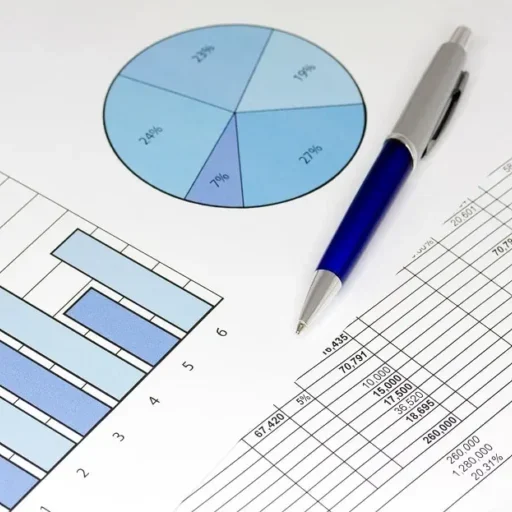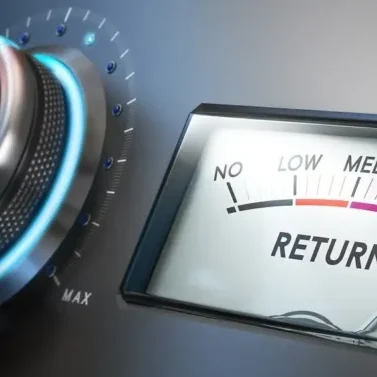How to Finance a Bread Route Acquisition
Buying a bread route can be a great business opportunity for the right person. It enables you to get a business that distributes well-known brands to established clientele (e.g., grocery stores, etc.).
However, financing the purchase of a bread route is challenging. The valuation of most bread routes often falls below the value that many lending institutions work with. Additionally, bread route companies seldom have any assets of significance. This lack of assets makes it difficult for lenders to provide them with funding.
This does not mean that these purchase transactions can't be financed. They can – if you know what finance companies look for. In this article, you learn:
- Buying a full business vs. individual routes
- Does the business have collateral?
- Why experience matters
- Financing alternatives
- Why a down payment is needed
- The most common financing structure
1. Buying a full business vs. individual routes
There are two common ways to buy a bread delivery route. You can buy all the routes from another business – basically purchasing a turnkey operation. Or you can buy some of their routes individually.
This important decision affects your ability to get acquisition financing.
a) Buying the whole business
Your first option is to the buy the whole business from another route operator. In these transactions, lenders (and buyers) can easily determine the company's revenues, expenses, and, ultimately, profits. This key step enables them to determine if the transaction is worthwhile.
b) Buying individual routes
The alternative is to buy individual routes from a business that operates multiple routes. This situation is more complex, for both the buyer and the finance company. In these transactions, it is difficult to determine if the individual route is profitable or not.
The first step is to determine the revenue. You can easily determine revenue if the seller segments revenues by route in their accounting system. If they don't segment revenues, determining individual route revenues is nearly impossible.
Then, you must determine the costs associated with the route you want to buy. This determination is very challenging since few (if any) operators with multiple routes track this level of detail. It can be done, but it is very laborious. For example: some routes may share trucks, drivers, or other assets. How do you properly attribute expense usage to each route?
As you can see, buying individual routes from a business is difficult because you can't accurately evaluate profitability. It is not unusual for transactions to fall through at the end for this reason alone.
Keep one thing in mind: the last thing you want to do is to buy someone else's unprofitable routes. You must understand the seller's revenues, costs, and, ideally, motivations for the sale.
2. Does the business have collateral?
Lenders seldom finance ideas or concepts. They finance assets such as cash flows, equipment, machinery, and corporate real estate. They look for such assets in every opportunity they finance.
However, many bread delivery route businesses don't have substantial collateral. They have only cash flow and equipment (delivery trucks). These are the only assets that can be funded.
a) How the seller holds equipment matters
There are three ways that the seller can hold the company's equipment. They can own the trucks, lease them, or rent them.
The easiest opportunities to finance are those in which the seller owns the equipment. The equipment is an asset of the business. It can be appraised and bought during the acquisition.
The situation gets more difficult if the business rents the equipment or if it uses an operating lease. In such cases, they don't "own" the equipment. Therefore, the trucks are not assets of the business. Fortunately, you can get around this problem by changing the structure of the transaction.
b) How much is the collateral worth?
One of the first steps in the lender's due diligence is appraising the collateral's value. This appraisal is often a source of contention for lenders, sellers, and buyers.
Sellers, understandably, want the highest possible value for their equipment. They want to sell the equipment a price comparable to their original purchase price (less wear and tear). Buyers, motivated to own the company, want a valuation that will allow the acquisition to fund.
Lenders, on the other hand, want a conservative valuation that is realistic if a business needs to be liquidated. This valuation is often lower than what sellers are expecting.
Finance institutions know that equipment is not easy to sell. Therefore, they appraise equipment using a conservative method called the "Orderly Liquidation Value" (OLV).
This method assigns a value to the collateral assuming it is sold "as is where is" in a reasonable time frame. Most experts agree that this method assigns a realistic value to the collateral.
Some lenders are more aggressive and use a "Forced Liquidation Valuation" (FLV). As the name implies, this valuation method assumes equipment is sold as quickly as possible to recover cash. Thus, the FLV value is much lower than the OLV valuation.
c) Is collateral free and clear?
Few companies buy their equipment by paying for it in full at time of purchase. Instead, they finance the equipment with a loan.
The lender protects their ownership claim in the equipment by filing a lien (claim) against it. They hold the lien until the loan is paid off.
During the sale of the bread route, existing equipment lenders need to be paid off. This payoff allows the equipment to transfer to the new owner.
3. Do you know how to operate a bread route?
Finance companies will provide financing only to buyers who have experience managing bread routes. Obviously, this condition limits their risk.
This approach favors current operators that are expanding by purchasing more bread routes. It also favors industry employees looking to acquire a business.
This requirement, however, creates a problem for some buyers. What happens if you don't have experience in the bread route industry? Are you out of luck? Not necessarily.
Buyers with no experience can still qualify for financing. However, they need to retain a management employee from the target company. Furthermore, they need to provide this individual with an employment contract to ensure they will stay for a suitable period of time.
4. What are your financing alternatives?
The following four types of funding are commonly used to finance the purchase of a bread route.
a) SBA-backed loan
A common way to acquire companies valued below five million dollars is to use a Small Business Administration (SBA)-backed loan. The SBA has a program that provides guarantees to lenders that fund small businesses. These guarantees provide lenders with an incentive to provide funding that benefits small business owners. Learn more about acquisition loans and their requirements.
b) Seller financing
As part of the acquisition, the seller may provide an installment loan for part of the purchase price. This funding is called "seller financing." These loans often have competitive terms and can reduce the amount of financing you need from lenders.
Furthermore, seller financing helps tie the seller with the future performance of the business. The seller needs you to succeed so you can pay them off.
c) Equipment financing
Equipment financing is often a component of the total financing package. It is used to finance the purchase of the bread route's equipment (mostly trucks). Facilities are structured as term loans secured by the equipment as collateral.
d) Asset-based financing
Lastly, asset-based financing is a catch-all type of financing that is used to finance most asset types. Asset-based financing uses a revolving facility, like a line of credit, for cash flow assets. Other assets, like machinery, equipment, and real estate, use term-loan structures. Asset-based loans are used in larger transactions that combine multiple asset types.
5. Down payments matter
Most buyers look for ways to buy the business with 100% financing. Unfortunately, this expectation is unrealistic. Lenders don't provide this type of funding. It's too risky for them because the buyer is not committing any of their own money.
You need to contribute about 10% of the purchase price as a down payment. This amount can be reduced to 5% if you get seller financing and if the seller is willing to take a standstill on the note. Most buyers fund the down payment through a number of sources such as savings, stock accounts, home equity lines, and so on. For more information, read "Can you do a LBO with no money down?"
6. How are acquisitions structured?
Most acquisitions are structured by combining financing options. Transactions usually have a buyer's down payment of 5% to 10% of the purchase cost and usually some (or all) of these alternatives:
- Seller financing
- Equipment financing
- SBA loan for the rest
Need to finance a bread route acquisition?
The first step to work with us is to submit this form. Once we review it, one of our associates will contact you to discuss the specific details of your acquisition.
Editor's note:
This information should not be considered legal or financial advice. Given the complexity of business acquisitions, this document is not guaranteed to be 100% accurate or cover every potential option. However, we make every effort to provide you with the best information. If you have comments, suggestions, or improvements, contact us via LinkedIn.






